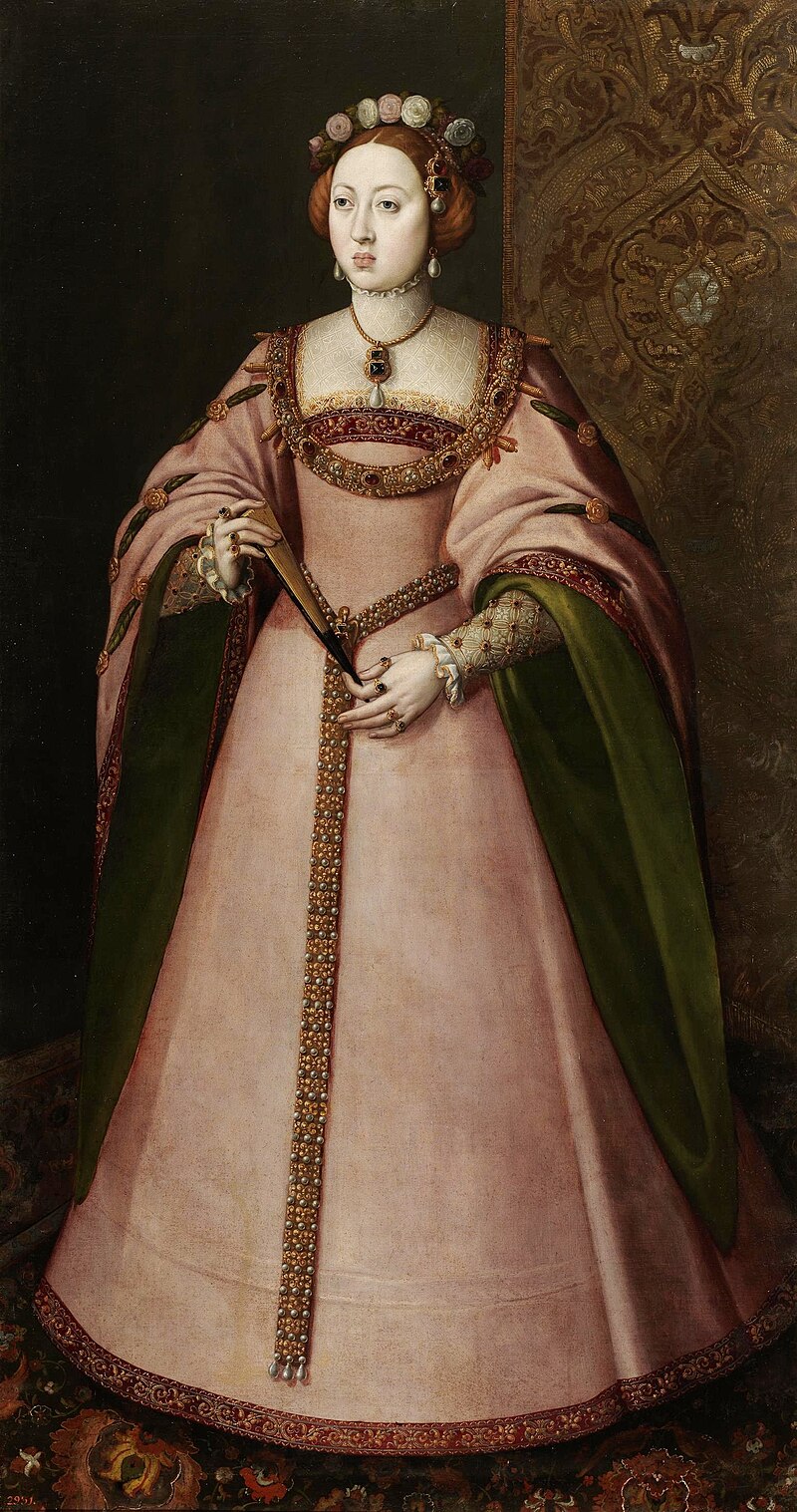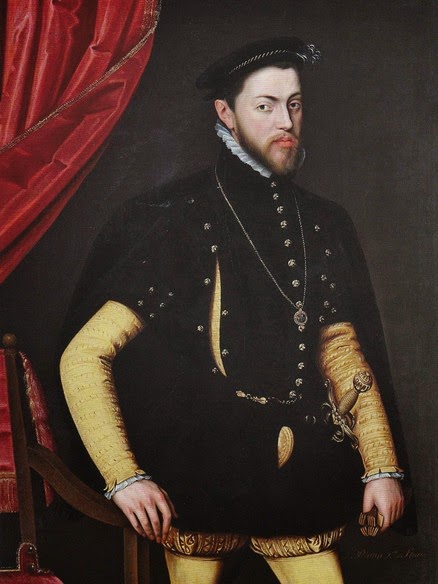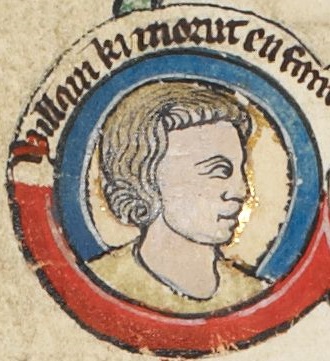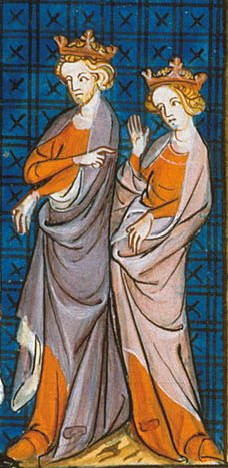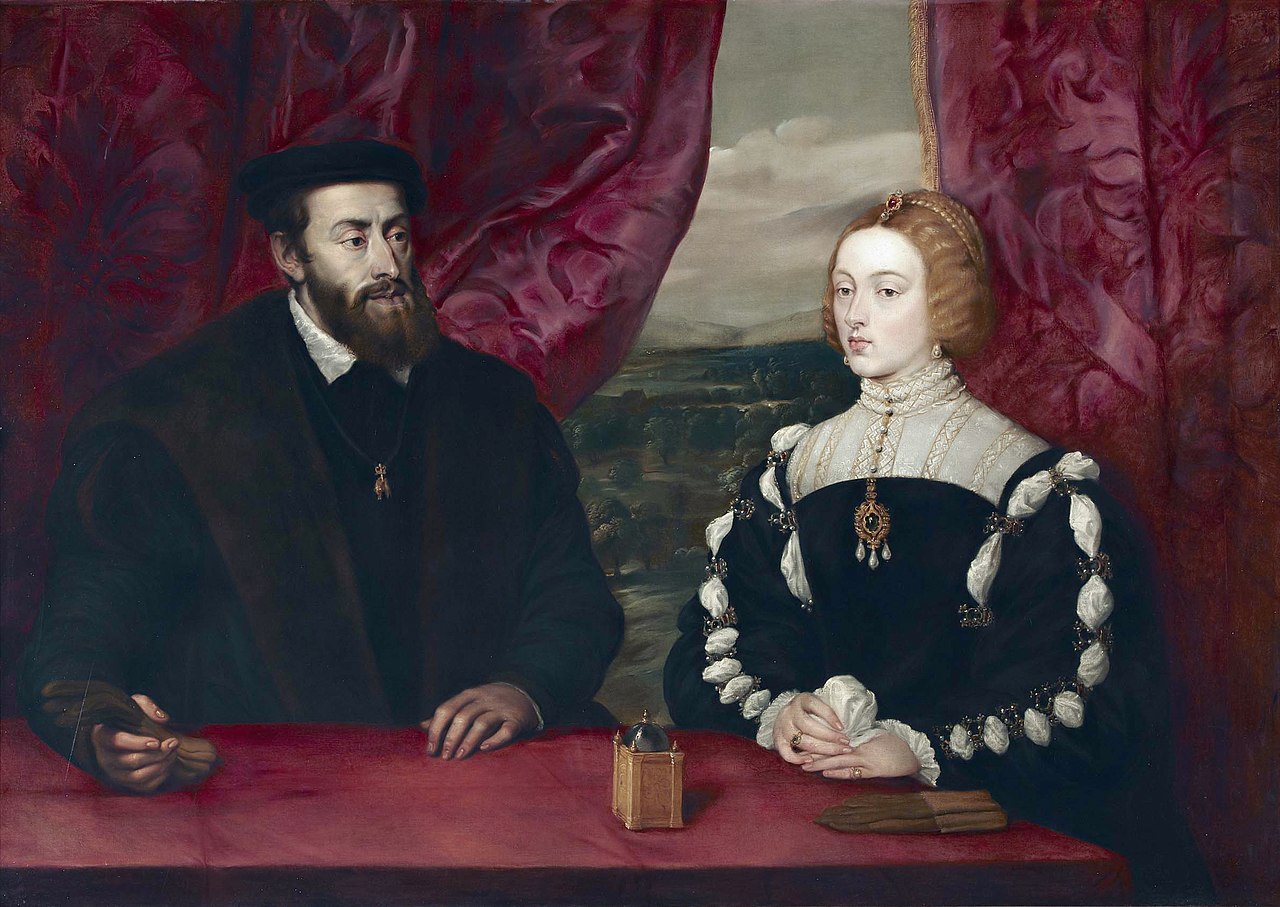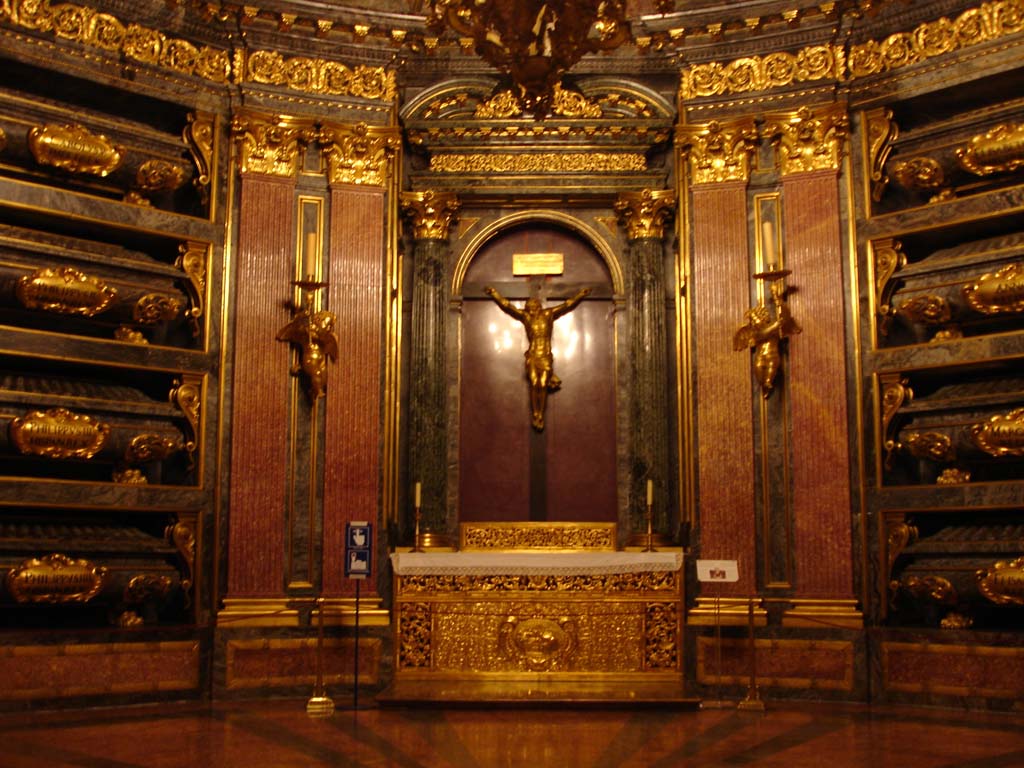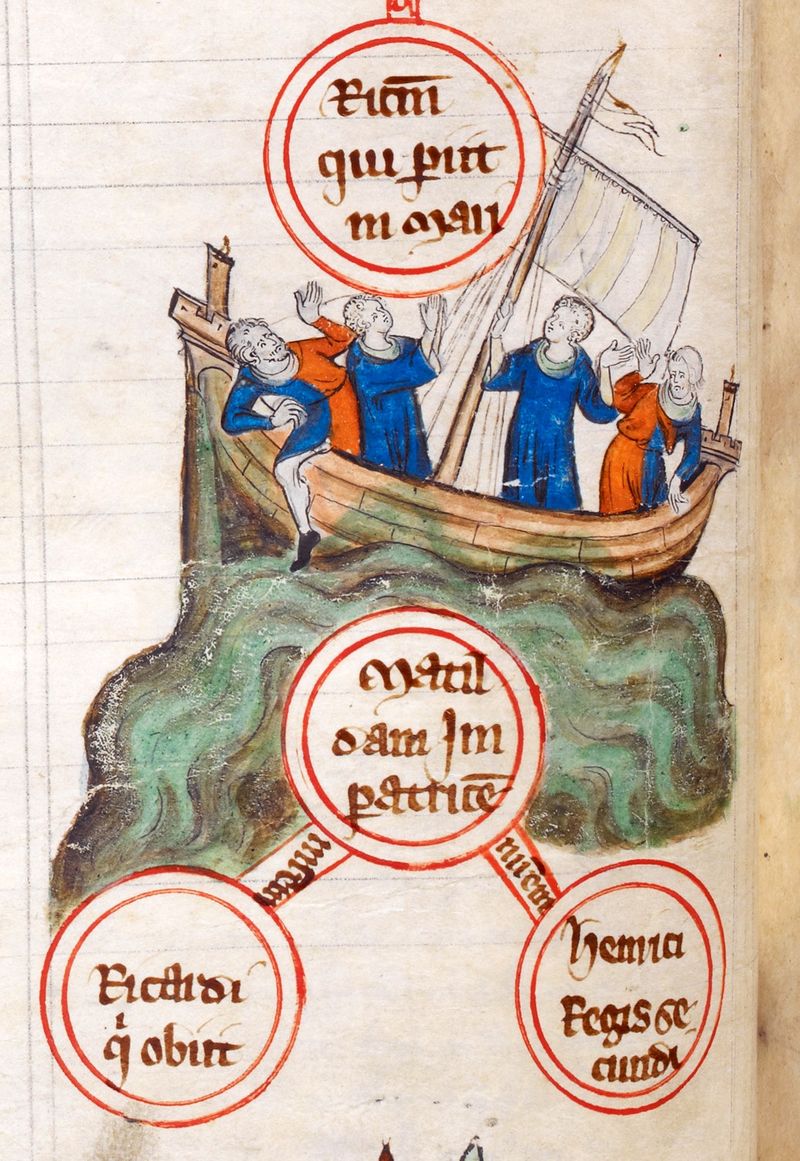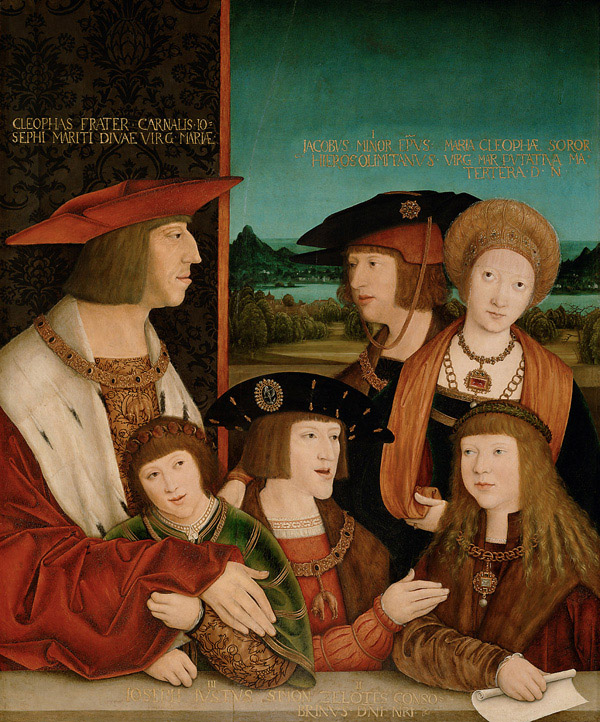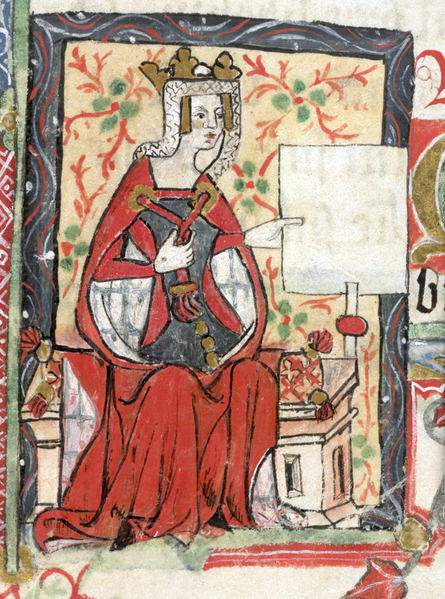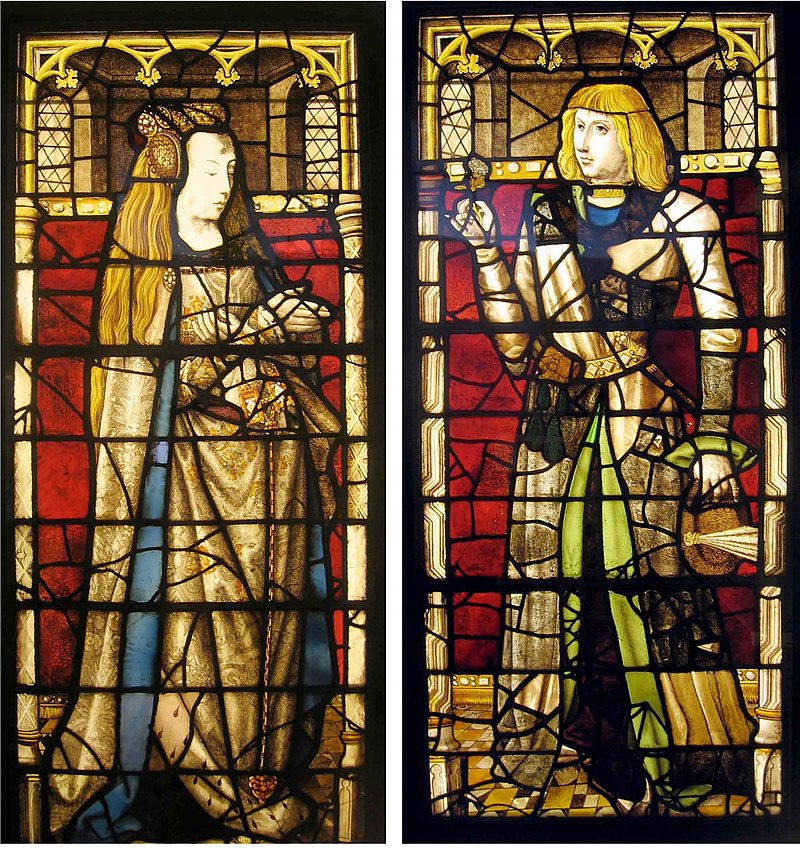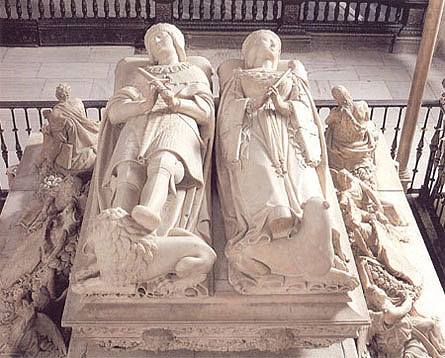by Susan Flantzer
© Unofficial Royalty 2022
The State Funeral of Queen Elizabeth II of the United Kingdom took place on Monday, September 19, 2022, at 11:00 AM British Time at Westminster Abbey in London, England. In the United Kingdom, a state funeral is usually reserved for the monarch or a very distinguished person with the approval of the monarch and Parliament such as Sir Winston Churchill‘s funeral in 1965. The arrangements for Queen Elizabeth II’s funeral were planned over many years, with The Queen’s involvement. After The Queen’s death, King Charles III may have made some changes and then signed off on the funeral plans.
Note: All article links for family members who participated in events and services are in the Guests section at the end of this article.
********************
The last photo of Queen Elizabeth II – Taken at Balmoral Castle two days before her death when she had a meeting with the new Prime Minister Liz Truss
Before the Funeral
Queen Elizabeth II died on September 8, 2022, at 3:10 PM British time, at Balmoral Castle, her home in Scotland. Her death was announced three hours later at 6:30 PM British time by Huw Edwards, the BBC’s chief presenter. The death certificate which was made public on September 29, 2022, stated the cause of death as “old age”.

The Ballroom at Balmoral Castle where the coffin of Queen Elizabeth rested for three days; Credit – Royal Collection Trust
Queen Elizabeth II’s coffin was made over thirty years before the funeral. It was made of English oak and lined with lead, a long-time royal tradition, to protect from moisture damage. Due to the weight, eight pallbearers were required for carrying rather than the usual six. The Queen’s coffin, draped with the Scottish version of the Royal Standard of the United Kingdom, rested in the ballroom at Balmoral Castle until September 11, 2022. On that day, the coffin traveled by hearse to the Palace of Holyroodhouse in Edinburgh, the official residence of the British monarch in Scotland. Upon arrival at the Palace of Holyroodhouse, the coffin rested in the palace’s Throne Room.
On September 12, 2022, Queen Elizabeth II’s coffin traveled by hearse from the Palace of Holyroodhouse, up the Royal Mile to St. Giles Cathedral accompanied by King Charles III and members of the Royal Family on foot. The coffin lay in rest at St. Giles Cathedral and the people of Scotland visited the cathedral to pay their respects. In the evening of September 12, 2022, King Charles III and his three siblings stood vigil at their mother’s coffin at St. Giles Cathedral.
Queen Elizabeth’s coffin arrives at St. Giles Cathedral in Edinburgh, Scotland
The coffin was taken from St. Giles Cathedral to Edinburgh Airport on September 13, 2022, at 5:00 PM British time. Accompanied by The Queen’s only daughter Princess Anne, The Princess Royal, the coffin traveled by plane to RAF Northolt, a Royal Air Force base near London. The coffin then traveled by hearse to Buckingham Palace in London where it was met by King Charles III, Queen Consort Camilla, and other members of the Royal Family. The coffin rested in the Bow Room, which overlooks the gardens. A rotating group of chaplains watched over the coffin.
Queen Elizabeth II’s coffin made its way along The Mall from Buckingham Palace, as it traveled to Westminster Hall. Members of the Royal Family followed on foot.
On September 14, 2022, Queen Elizabeth II’s coffin was moved from Buckingham Palace to Westminster Hall, at the Palace of Westminster, also called the Houses of Parliament, where the Queen lay in state for four days. King Charles III, his sons The Prince of Wales and The Duke of Sussex, and The King’s siblings The Princess Royal, The Duke of York, and the Earl of Wessex walked behind the coffin. Also walking behind the coffin were Princess Anne’s husband Sir Timothy Laurence, Princess Anne’s son Peter Phillips, The Queen’s nephew David Armstrong-Jones, 2nd Earl of Snowdon, and The Queen’s first cousin Prince Richard, Duke of Gloucester. The Queen Consort, The Princess of Wales, The Duchess of Sussex, and the Countess of Wessex traveled by car. Members of the public were able to pay their respects to The Queen’s coffin in Westminster Hall, 24 hours a day until 6:30 AM British Time on Monday, September 19, 2022, the day of the funeral.
The four children of Queen ELizabeth II stand vigil around her coffin
On the evening of September 16, 2022, The Queen’s four children, King Charles III, The Princess Royal, The Duke of York, and The Earl of Wessex, held a vigil around the coffin of The Queen. On the evening of September 17, 2022, Queen Elizabeth II’s eight grandchildren, The Prince of Wales, The Duke of Sussex, Peter Phillips, Zara Tindall, Princess Beatrice, Princess Eugenie, Lady Louise Windsor, and Viscount Severn, held a vigil around the coffin of their grandmother.
Queen Elizabeth II’s eight grandchildren stand vigil around her coffin
********************
The Funeral Service
The coffin of Queen Elizabeth II is carried down the aisle of Westminster Abbey
At 10:44 AM British Time, on Monday, September 19, 2022, the coffin of Queen Elizabeth II traveled in procession on the State Gun Carriage of the Royal Navy pulled by 142 Royal Navy sailors the short distance from the Palace of Westminster to Westminster Abbey for the State Funeral. King Charles III, members of the Royal Family, and members of The King’s Household followed the coffin.
The State Funeral Service was conducted by David Hoyle, Dean of Westminster. The Sermon was given by Justin Welby, Archbishop of Canterbury, who also gave the Commendation.
Music: The Choir of Westminster Abbey and the Choir of the Chapel Royal, St James’s Palace, (Joseph McHardy, Director of Music) under the direction of James O’Donnell, Organist and Master of the Choristers, Westminster Abbey. The organ was played by Peter Holder, Sub-Organist, Westminster Abbey
For more detailed information including texts of prayers and hymns, see Westminster Abbey: Order of Service The State Funeral of Her Majesty Queen Elizabeth II
Members of the Royal Family follow the coffin down the aisle of Westminster Abbey
The coffin was carried down the aisle of Westminster Abbey followed by a procession that included King Charles III, Queen Consort Camilla, The Princess Royal, her husband Vice Admiral Sir Tim Laurence, The Duke of York, The Earl of Wessex, The Countess of Wessex, The Prince of Wales, The Princess of Wales, Prince George of Wales, Princess Charlotte of Wales, The Duke of Sussex, The Duchess of Sussex, Peter Phillips, The Earl of Snowdon, The Duke of Gloucester, The Duke of Kent, and Prince Michael of Kent.
During the Procession of the Coffin, the choir sang The Sentences – five lines of scripture set to music by William Croft (1678 – 1727) and Henry Purcell (1659 – 1695).
David Hoyle, Dean of Westminster, gave The Bidding, giving thanks for The Queen’s “life-long sense of duty and dedication.”
The choir and the congregation sang the hymn The day thou gavest, Lord, is ended written by Reverend John Ellerton (1826 – 1893).
Patricia Janet Scotland, Baroness Scotland of Asthal, Secretary-General of the Commonwealth of Nations read The First Lesson: 1 Corinthians 15: 20–26, 53–end
The choir sang Psalm 42: 1–7 Like as the Hart, with music composed specially for this service by Judith Weir (born 1954) who holds the title of Master of the King’s Music, a role within the royal household in which she composes music at the monarch’s request.
Prime Minister Liz Truss read the Second Lesson: John 14: 1–9a
The choir and the congregation sang the hymn The Lord’s My Shepherd by Jessie Seymour Irvine (1836- 1887), the daughter of a Church of Scotland parish minister. This hymn was sung at The Queen’s wedding to Prince Philip, Duke of Edinburgh in 1947.
Justin Welby, Archbishop of Canterbury, in the pulpit on the left, gave the sermon.
The choir sang The Anthem My soul, there is a country from Songs of Farewell by Hubert Parry (1848 – 1918).
The Prayers were said by Iain Greenshields, Moderator of the General Assembly of the Church of Scotland; Shermara Fletcher, Principal Officer for Pentecostal and Charismatic Relations, Churches Together in England; Dame Sarah Mullally, Bishop of London and Dean of His Majesty’s Chapels Royal; Helen Cameron, Moderator of the Free Churches Group; Cardinal Vincent Nichols, Archbishop of Westminster; and Stephen Cottrell, Archbishop of York.
The choir sang Psalm 34: 8 – Taste and see how gracious the Lord is composed by Ralph Vaughan Williams (1872 – 1958) for the Coronation of Queen Elizabeth II.
The congregations said The Lord’s Prayer.
The choir and the congregation sang the hymn Love Divine, All Loves Excelling, words by Charles Wesley (1707 – 1788), melody Blaenwern by William Penfro Rowlands (1860 – 1937). This hymn was sung at the 2005 Service of Prayer and Dedication following the marriage of King Charles III and Camilla Parker-Bowles and the 2011 wedding of Prince William and Catherine Middleton.
Justin Welby, Archbishop of Canterbury said The Commendation, in which the deceased person is commended to God.
The Choir sang The Anthem Who shall separate us from the love of Christ? composed specially for this service by Sir James MacMillan (born 1959).
David Hoyle, Dean of Westminster pronounced The Blessing.
Four trumpeters from the British Army’s Household Cavalry sounded The Last Post, a short military fanfare, traditionally played in the United Kingdom at military funerals, on Remembrance Day, and at ceremonies commemorating those who have lost their lives in war.
Two Minutes of Silence was observed at Westminster Abbey and throughout the United Kingdom.
The trumpeters sounded The Reveille to signal the end of the Two Minutes of Silence.
The choir and the congregation sang God Save The King, the National Anthem.
The Queen’s Piper, Warrant Officer Class 1 (Pipe Major) Paul Burns, played a traditional bagpipe lament, Sleep, Dearie, Sleep. Paul Burns was the personal piper of Queen Elizabeth II. He woke The Queen every morning with the sound of his bagpipes outside her window.
The coffin of Queen Elizabeth II was carried up the aisle of Westminster Abbey in a procession that included King Charles III, Queen Consort Camilla, The Princess Royal, her husband Vice Admiral Sir Tim Lawrence, The Duke of York, The Earl of Wessex, The Countess of Wessex, The Prince of Wales, The Princess of Wales, Prince George of Wales, Princess Charlotte of Wales, The Duke of Sussex, The Duchess of Sussex, Mr. Peter Phillips, The Earl of Snowdon, The Duke of Gloucester, The Duke of Kent, and Prince Michael of Kent.
The Duchess of Sussex, The Queen Consort, Prince George of Wales, The Princess of Wales, Princess Charlotte of Wales, and the Countess of Wessex watch as the coffin is put on the gun carriage after the funeral
********************
Procession to Wellington Arch and then to Windsor
Royal Navy sailors pull the gun carriage bearing the coffin of Queen Elizabeth II through Wellington Arch
After the funeral service, Queen Elizabeth’s coffin was placed on the State Gun Carriage of the Royal Navy and pulled by 142 Royal Navy sailors in a procession led by the Royal Canadian Mounted Police from Westminster Abbey to Wellington Arch near Hyde Park. Walking behind the coffin were King Charles II, The Princess Royal, The Duke of York, The Earl of Wessex, The Prince of Wales, The Duke of Sussex, Peter Phillips, The Earl of Snowdon, The Duke of Gloucester, and Vice Admiral Sir Tim Laurence. Following behind in cars were Queen Consort Camilla, The Princess of Wales, Prince George of Wales, Princess Charlotte of Wales, The Countess of Wessex, The Duchess of Sussex, Princess Beatrice, Princess Eugenie, and The Duchess of Gloucester. At Wellington Arch, the coffin was transferred to a hearse for the trip to Windsor where the Committal Service would take place at St. George’s Chapel, Windsor Castle
The hearse leaves Wellington Arch on its way to Windsor
********************
The Committal Service
The Committal Service at St. George’s Chapel, Windsor Castle
A committal service commits the deceased person to their final resting place. The Committal Service for Queen Elizabeth II was held at St. George’s Chapel, Windsor Castle in Windsor, England on Monday, September 19, 2022, at 4:00 PM British Time. 800 guests attended the committal service. Among those who attended were members of the British Royal Family, foreign royalty, past and present members of The Queen’s Household, including from the private estates and Governors-General and Realm Prime Ministers. Some people only attended the committal service as noted on the guest list at the end of this article.
For more detailed information including texts of prayers and hymns, see St. George’s Chapel, Windsor Castle: The Committal of Her Majesty Queen Elizabeth II
The Committal Service was led by David Conner, Dean of Windsor. The Blessing was pronounced by Justin Welby, Archbishop of Canterbury. Music was provided by the Choir of St George’s Chapel conducted by James Vivian, Director of Music. The organ was played by Luke Bond, Assistant Director of Music.
At 4:00 PM British Time, the coffin was carried into St. George’s Chapel in a procession that included King Charles III, Queen Consort Camilla, The Princess Royal, her husband Vice Admiral Sir Tim Lawrence, The Duke of York, The Earl of Wessex, The Countess of Wessex, The Prince of Wales, The Princess of Wales, The Duke of Sussex, The Duchess of Sussex, Mr. Peter Phillips, The Earl of Snowdon, The Duke of Gloucester, The Duke of Kent, and Prince Michael of Kent. As the coffin proceeded down the aisle, the choir sang Psalm 121 – I will lift up mine eyes unto the hills: from whence cometh my help with music by Sir Henry Walford Davies (1869 – 1941).
The choir sang The Russian Kontakion of the Departed, music from a Kyiv melody, words translated by William J. Birkbeck (1869 – 1916). This was also sung at the funeral of Prince Philip, Duke of Edinburgh as an homage to his Eastern Orthodox religious background. His paternal grandfather was King George I of Greece and his paternal grandmother Queen Olga of Greece was born Grand Duchess Olga Konstantinovna of Russia, a granddaughter of Nicholas I, Emperor of All Russia.
David Conner, Dean of Windsor gave The Bidding.
The choir and congregation sang the hymn All My Hope on God Is Founded, originally a German Hymn “Meine Hoffnung stehet feste” written around 1680 by Joachim Neander , words translated into English by Robert Bridges (1844 – 1930), music by Herbert Howells (1892 – 1983)
The Reading, Revelation 21.1–7, was read by David Conner, Dean of Windsor.
The Prayers were read by Paul Williams, Rector of St. Mary Magdalene Church, Sandringham, Kenneth Mackenzie, Minister of Crathie Kirk, and Martin Poll, Chaplain of the Royal Chapel, Windsor Great Park
The Congregation said The Lord’s Prayer.
The Choir sang The Motet, Bring Us, O Lord God, At Our Last Awakening, music composed by Sir William Henry Harris (1883 – 1973), words by the poet John Donne (1572 – 1631).
The Imperial State Crown, The Orb and The Sceptre being carried to The Dean of Windsor
The congregation stood in silence while the Imperial State Crown, The Orb, and The Sceptre were removed from The Queen’s coffin by the Crown Jeweler Mark Appleby (on the left in above photo). He then gave the regalia to Chris Livett, The Queen’s Bargemaster, (in the middle i and a Serjeant of Arms. They were then given to David Conner, Dean of Windsor who placed them on the High Altar.
David Conner, Dean of Windsor places the Imperial State Crown on the High Altar
The choir and congregation sang the hymn Christ is Made the Sure Foundation, adapted from the final section of Henry Purcell‘s anthem O God, thou art my God; words from a 6th or 7th-century Latin monastic hymn Urbs beata Jerusalem, translated by John M. Neale (1818 – 1866). This hymn was sung during the weddings of Princess Margaret and Antony Armstrong-Jones in 1960, and Prince Charles and Lady Diana Spencer in 1981, and was the opening hymn of The Queen’s Platinum Jubilee service in St. Paul’s Cathedral on June 3, 2022
King Charles III places The Queen’s Company Camp Colour of the Grenadier Guards on the coffin
At the end of the hymn, The Queen’s Company Camp Colour of the Grenadier Guards was placed on the coffin by King Charles III having received it from the Regimental Lieutenant Colonel Grenadier Guards. The monarch’s Company Colour is crimson. Queen Elizabeth II held the position of Company Commander of the Grenadier Guards’ Queen’s Company. Only one flag is presented across a monarch’s reign. That crimson flag was retired following the funeral and went with The Queen’s coffin when she was interred.
Andrew Parker, Baron Parker of Minsmere, The Lord Chamberlain breaks his wand of service
Andrew Parker, Baron Parker of Minsmere, The Lord Chamberlain, the most senior official in Queen Elizabeth III’s Royal Household, stood in front of the coffin, broke his wand of office, and laid the two pieces on the coffin. This was a symbolic gesture marking the death of the sovereign he served.
As the coffin was lowered into the Royal Vault under St. George’s Chapel, David Conner, Dean of Windsor said Psalm 103. 13–17, Like as a father pitieth his own children: even so is the Lord merciful unto them that fear him.
David Conner, Dean of Windsor then said the prayer:
Go forth upon thy journey from this world,
O Christian soul;
In the name of God the Father Almighty who created thee;
In the name of Jesus Christ who suffered for thee;
In the name of the Holy Spirit who strengtheneth thee.
In communion with the blessèd saints,
and aided by Angels and Archangels,
and all the armies of the heavenly host,
may thy portion this day be in peace,
and thy dwelling in the heavenly Jerusalem.
Amen.
David Vines White, The Garter King of Arms proclaimed The Styles and Titles of Queen Elizabeth II:
Thus it hath pleased Almighty God to take out of this transitory life unto His Divine Mercy the late Most High, Most Mighty, and Most Excellent Monarch, Elizabeth the Second, by the Grace of God of the United Kingdom of Great Britain and Northern Ireland and of Her other Realms and Territories Queen, Head of the Commonwealth, Defender of the Faith, and Sovereign of the Most Noble Order of the Garter.
The Queen’s Piper, Warrant Officer Class 1 (Pipe Major) Paul Burns played a lament, A Salute to the Royal Fendersmith, from the North Quire Aisle.
David Vines White, The Garter King of Arms said:
Let us humbly beseech Almighty God to bless with long life, health and honour, and all worldly happiness the Most High, Most Mighty and Most Excellent Monarch, our Sovereign Lord, now, by the Grace of God, of the United Kingdom of Great Britain and Northern Ireland and of His other Realms and Territories King, Head of the Commonwealth, Defender of the Faith, and Sovereign of the Most Noble Order of the Garter. GOD SAVE THE KING.
Justin Welby, Archbishop of Canterbury pronounced The Blessing.
The choir and the congregation sang God Save The King, the National Anthem.
********************
The Burial

King George VI Memorial Chapel; Credit – Connie Nissinger, www.findagrave.com
In a private, family service conducted by David Conner, Dean of Windsor at 7:30 PM British Time, on the day of the funeral, Queen Elizabeth II was interred in the crypt of the King George VI Memorial Chapel which is located on a side aisle of St. George’s Chapel. At the same time, the coffin of her husband Prince Philip, Duke of Edinburgh, who died in 2021, was moved from its temporary place in the Royal Vault beneath St. George’s Chapel and interred in the crypt of the King George VI Memorial Chapel. The coffin of Queen Elizabeth II now rests with the coffins of her husband, her father King George VI, her mother Queen Elizabeth The Queen Mother, and the ashes of her sister Princess Margaret.
After the interment of Queen Elizabeth II and The Duke of Edinburgh, a replacement ledger stone with a metal star of the Order of the Garter between the couples’ names was put into the floor of the King George Memorial Chapel. A memorial headstone with a slanted top for Princess Margaret, which had been placed by her children, leans against the wall.
********************
Guests
Around 2,000 invited guests attended the funeral of Queen Elizabeth II. In addition to foreign dignitaries and The Queen’s family and friends, guests included United Kingdom former prime ministers, cabinet ministers, government leaders, and political party leaders. In addition, there were religious representatives, courtiers and employees, recipients of orders and decorations, and volunteers who supported charities important to The Queen. All 2,000 guests are not listed below. A more inclusive, but not complete list can be seen at Wikipedia: List of dignitaries at the state funeral of Elizabeth II.
Below is a list of members of the British Royal Family, members of reigning royal houses, members of non-reigning royal houses, and close non-royal family members who attended the funeral. For many, the relationship with Queen Elizabeth II is noted.
British Royal Family
Some members of the British Royal Family (Front Row) King Charles III; Queen Consort Camilla; The Princess Royal; Vice Admiral Sir Tim Laurence; The Duke of York; The Earl of Wessex; The Countess of Wessex; The Prince of Wales; Prince George of Wales; The Princess of Wales; Princess Charlotte of Wales; Peter Phillips; Zara Tindall; Mike Tindall; (Second Row) The Duke of Sussex; The Duchess of Sussex; Princess Beatrice; Edoardo Mapelli Mozzi; Lady Louise Windsor; Viscount Severn; Jack Brooksbank; Princess Eugenie; Sarah, Duchess of York; The Earl of Snowdon; Viscount Linley; Lady Margarita Armstrong-Jones (Third Row) Samuel Chatto; Arthur Chatto; Lady Sarah Chatto; Daniel Chatto; The Duke of Gloucester; The Duke of Kent; Earl and Countess of St Andrews; Edward Windsor Lord Downpatrick; Lady Amelia Windsor; Lady Marina Windsor
Descendants of Queen Elizabeth II
- King Charles III, The Queen’s son, and his wife Queen Consort Camilla
- Prince William, The Prince of Wales, The Queen’s grandson, son of King Charles III, and his wife Catherine, The Princess of Wales
- Prince George of Wales, The Queen’s great-grandson, son of The Prince of Wales
- Princess Charlotte of Wales, The Queen’s great-granddaughter, daughter of The Prince of Wales
- Prince Harry, The Duke of Sussex, The Queen’s grandson, son of King Charles III, and his wife Meghan, The Duchess of Sussex
- Princess Anne, The Princess Royal, The Queen’s daughter, and her husband Sir Timothy Laurence
- Peter Phillips, The Queen’s grandson, son of The Princess Royal
- Savannah Phillips, The Queen’s great-granddaughter, daughter of Peter Phillips (present only at the committal service)
- Isla Phillips, The Queen’s great-granddaughter, daughter of Peter Phillips (present only at the committal service)
- Zara Tindall, The Queen’s granddaughter, daughter of The Princess Royal, and her husband Mike Tindall
- Mia Tindall, The Queen’s great-granddaughter, daughter of Zara Tindall (present only at the committal service)
- Prince Andrew, The Duke of York, The Queen’s son, and his former wife Sarah, Duchess of York
- Princess Beatrice, The Queen’s granddaughter, daughter of The Duke of York, and her husband Edoardo Mapelli Mozzi
- Princess Eugenie, The Queen’s granddaughter, daughter of The Duke of York, and her husband Jack Brooksbank
- Prince Edward, The Earl of Wessex, The Queen’s son, and his wife Sophie, The Countess of Wessex
- Lady Louise Windsor, The Queen’s granddaughter, daughter of The Earl of Wessex
- James Windsor, Viscount Severn, The Queen’s grandson, son of The Earl of Wessex
Descendants of King George VI
- David Armstrong-Jones, 2nd Earl of Snowdon, The Queen’s nephew, son of the late Princess Margaret
- Charles Armstrong-Jones, Viscount Linley, The Queen’s great-nephew, son of The Earl of Snowdon
- Lady Margarita Armstrong-Jones, The Queen’s great-niece, daughter of The Earl of Snowdon
- Lady Sarah Chatto, The Queen’s niece, daughter of the late Princess Margaret, and her husband Daniel Chatto
- Samuel Chatto, The Queen’s great-nephew, son of Lady Sarah Chatto
- Arthur Chatto, The Queen’s great-nephew, son of Lady Sarah Chatto
Descendants of King George V – Extended British Royal Family
- Prince Richard, The Duke of Gloucester, The Queen’s first cousin, and his wife Birgitte, The Duchess of Gloucester
- Alexander Earl of Ulster, The Queen’s first cousin once removed, son of The Duke of Gloucester
- Xan Windsor, Lord Culloden, The Queen’s first cousin twice removed, son of Earl of Ulster
- Lady Cosima Windsor, The Queen’s first cousin twice removed, daughter of Earl of Ulster
- Lady Davina Windsor, The Queen’s first cousin once removed, daughter of The Duke of Gloucester
- Senna Lewis, The Queen’s first cousin twice removed, daughter of Lady Davina Windsor
- Lady Rose Gilman, The Queen’s first cousin once removed, daughter of The Duke of Gloucester, and her husband George Gilman
- Lyla Gilman, The Queen’s first cousin twice removed, daughter of Lady Rose Gilman
- Prince Edward, The Duke of Kent, The Queen’s first cousin
- George Windsor, Earl of St. Andrews, The Queen’s first cousin once removed, son of The
- Duke of Kent, and his wife Countess of St Andrews
- Edward Windsor, Lord Downpatrick, The Queen’s first cousin twice removed, son of Earl of St. Andrews
- Lady Marina Windsor, The Queen’s first cousin twice removed, daughter of Earl of St. Andrews
- Lady Amelia Windsor, The Queen’s first cousin twice removed, daughter of Earl of St. Andrews
- Lady Helen Taylor, The Queen’s first cousin once removed, daughter of The Duke of Kent, and her husband Timothy Taylor
- Columbus Taylor, The Queen’s first cousin twice removed, son of Lady Helen Taylor
- Cassius Taylor, The Queen’s first cousin twice removed, son of Lady Helen Taylor
- Eloise Taylor, The Queen’s first cousin twice removed, daughter of Lady Helen Taylor
- Estella Taylor, The Queen’s first cousin twice removed, daughter of Lady Helen Taylor
- Lord Nicholas Windsor, The Queen’s first cousin once removed, son of The Duke of Kent
- Albert Windsor, The Queen’s first cousin twice removed, son of Lord Nicholas Windsor
- Leopold Windsor, The Queen’s first cousin twice removed, son of Lord Nicholas Windsor
- Princess Alexandra, The Honorable Lady Ogilvy, The Queen’s first cousin
- James Ogilvy, The Queen’s first cousin once removed, son of Princess Alexandra, and his wife Julia Ogilvy,
- Flora Vesterberg, The Queen’s first cousin twice removed, daughter of James Ogilvy, and her husband Timothy Vesterberg
- Alexander Ogilvy, The Queen’s first cousin twice removed, son of James Ogilvy
- Marina Ogilvy, The Queen’s first cousin once removed, daughter of Princess Alexandra
- Zenouska Mowatt, The Queen’s first cousin twice removed, daughter of Marina Ogilvy
- Christian Mowatt, The Queen’s first cousin twice removed, daughter of Marina Ogilvy
- Prince Michael of Kent, The Queen’s first cousin, and his wife Princess Michael of Kent
- Lord Frederick Windsor, The Queen’s first cousin once removed, son of Prince Michael of Kent, and his wife Lady Frederick Windsor
- Lady Gabriella Kingston, The Queen’s first cousin once removed, daughter of Prince Michael of Kent, and her husband Thomas Kingston
*******************
Non-Royal Family Members
Descendants of King Edward VII
The Fife family are descendants of Princess Louise, The Princess Royal, the eldest daughter of King Edward VII of the United Kingdom and Princess Alexandra of Denmark, and her husband Alexander Duff, 1st Duke of Fife.
- David Carnegie, 4th Duke of Fife, The Queen’s second cousin once removed, son of James Carnegie, 3rd Duke of Fife, and his wife Caroline Carnegie, Duchess of Fife (present only at the committal service)
- Lady Alexandra Etherington, The Queen’s second cousin once removed, daughter of James Carnegie, 3rd Duke of Fife, and her husband Mark Etherington
Descendants of Queen Victoria
While the following people are related to The Queen, they are members of the Mountbatten family and are more closely related to the late Prince Philip, Duke of Edinburgh. The Mountbatten family and Prince Philip, Duke of Edinburgh are descendants of Queen Victoria of the United Kingdom and Prince Albert of Saxe-Coburg and Gotha through their daughter Princess Alice of the United Kingdom and her husband Ludwig IV, Grand Duke of Hesse and by Rhine.
- Penelope Knatchbull, Countess Mountbatten of Burma, wife of Norton Knatchbull, 3rd Earl Mountbatten of Burma who is The Queen’s third cousin once removed and the grandson of Louis Mountbatten, 1st Earl Mountbatten of Burma
- Lady Alexandra Hooper, The Queen’s third cousin twice removed, daughter of Norton Knatchbull, 3rd Earl Mountbatten of Burma, and her husband Thomas Hooper
- Lady Pamela Hicks, The Queen’s third cousin, daughter of Louis Mountbatten, 1st Earl Mountbatten of Burma
- Edwina Brudenell, The Queen’s third cousin once removed, daughter of Lady Pamela Hicks (present only at the committal service)
- Maddison Modupe-Ojo, The Queen’s third cousin twice removed, daughter of Edwina Brudenell (present only at the committal service)
- India Flint Wood, The Queen’s third cousin once removed, daughter of Lady Pamela Hicks
The Spencer Family
- Charles Spencer, 9th Earl Spencer, godson of The Queen, brother of the late Diana, Princess of Wales, maternal uncle of The Prince of Wales and The Duke of Sussex, and his wife Karen Spencer, Countess Spencer (present only at the committal service)
- Jane Fellowes, Baroness Fellowes, sister of the late Diana, Princess of Wales, maternal aunt of The Prince of Wales and The Duke of Sussex, and her husband Robert Fellowes, Baron Fellowes, a former private secretary to The Queen
The Parker Bowles and Shand Family
- Tom Parker Bowles, son of Queen Consort Camilla, godson of King Charles III
- Lola Parker Bowles, granddaughter of Queen Consort Camilla, daughter of Tom Parker Bowles
- Frederick Parker Bowles, grandson of Queen Consort Camilla, son of Tom Parker Bowles
- Laura Lopes, daughter of Queen Consort Camilla, and her husband Harry Lopes
- Eliza Lopes, granddaughter of Queen Consort Camilla, daughter of Laura Lopes
- Gus Lopes, grandson of Queen Consort Camilla, son of Laura Lopes
- Louis Lopes, grandson of Queen Consort Camilla, son of Laura Lopes
- Annabel Elliot, sister of Queen Consort Camilla, and her husband Simon Elliot
The Middleton Family
*******************
Members of Reigning Royal Houses
Some foreign royalty: (Front Row) Princess Beatrix, Queen Máxima and King Willem-Alexander of the Netherlands; Queen Silvia and King Carl XVI Gustaf of Sweden; Crown Prince Frederik and Queen Margrethe II of Denmark (Second Row) King Harald V and Queen Sonja of Norway; Queen Sofia and King Juan Carlos of Spain; Queen Letizia and King Felipe VI of Spain (Third Row) Prince Albert II of Monaco, Grand Duchess Maria Teresa and Grand Duke Henri of Luxembourg (Fourth Row) Margareta, Custodian of the Crown of Romania, Crown Princess Marie-Chantal, Crown Prince Pavlos and Queen Anne-Marie of Greece.
Queen Elizabeth II is related to all the current reigning European sovereigns. She is most closely related to King Harald V of Norway. They are both great-grandchildren of King Edward VII of the United Kingdom and Princess Alexandra of Denmark. Most European royals are related via their descent from Queen Victoria of the United Kingdom and her husband Prince Albert of Saxe-Coburg and Gotha and/or King Christian IX of Denmark and his wife Princess Louise of Hesse-Kassel.
Note: The Kingdoms of Cambodia, Eswatini, and Thailand did not send royal representatives. Instead, those kingdoms were represented by:
*******************
Members of Non-Reigning Royal Houses
Queen Elizabeth II is also related to many members of non-reigning royal houses.
- Baden: Valerie, Margravine of Baden, wife of Maximilian, Margrave of Baden, Head of the House of Baden, nephew of Prince Philip, Duke of Edinburgh
- Baden: Hereditary Prince Bernhard, great-nephew of Prince Philip, Duke of Edinburgh, and his wife Hereditary Princess Stephanie
- Bulgaria: Tsar Simeon II – Simeon and The Queen are fourth cousins once removed through Franz Friedrich Anton, Duke of Saxe-Coburg-Saalfeld and Augusta Reuss of Erbesdorf
- Greece: Queen Anne-Marie, wife of King Constantine II who was unable to travel – Queen Anne-Marie (born a Princess of Denmark) and The Queen are third cousins through both King Christian IX of Denmark and Princess Louise of Hesse-Kassel and Queen Victoria of the United Kingdom and Prince Albert of Saxe-Coburg and Gotha. King Constantine II and The Queen are also third cousins through King Christian IX of Denmark and Princess Louise of Hesse-Kassel and Queen Victoria and Prince Albert
- Greece: Crown Prince Pavlos, son of King Constantine II, and Crown Princess Marie-Chantal
- Greece: Princess Theodora, daughter of King Constantine II and a goddaughter of Queen Elizabeth II (present only at the committal service)
- Hesse: Prince Donatus, Landgrave of Hesse, Head of the House of Hesse and his wife Landgravine Floria-Franziska – Donatus and The Queen are third cousins once removed through Queen Victoria and Prince Albert
- Hohenlohe-Langenburg: Prince Philipp, Head of the House of Hohenlohe-Langenburg, great-nephew of Prince Philip, The Duke of Edinburgh, and his wife Princess Saskia
- Hohenlohe-Langenburg: Princess Xenia, great-niece of Prince Philip, Duke of Edinburgh, and sister of Prince Philipp
- Romania: Princess Margareta, The Custodian of the Crown of Romania, and her husband Prince Radu of Romania – Margareta and The Queen are third cousins once removed through Queen Victoria and Prince Albert and third cousins through King Christian IX of Denmark and Princess Louise of Hesse-Kassel
- Romania: Princess Elena, sister of Princess Margareta, The Custodian of the Crown of Romania, and her husband Alexander Nixon (present only at the committal service)
- Serbia: Crown Prince Alexander and Crown Princess Katherine – Alexander and The Queen are third cousins through both Queen Victoria and Prince Albert and King Christian IX of Denmark and Princess Louise of Hesse-Kassel
- Tūheitia Potatau Te Wherowhero VII, Māori King
This article is the intellectual property of Unofficial Royalty and is NOT TO BE COPIED, EDITED, OR POSTED IN ANY FORM ON ANOTHER WEBSITE under any circumstances. It is permissible to use a link that directs to Unofficial Royalty.
*******************
Works Cited
- En.wikipedia.org. 2022. Death and state funeral of Elizabeth II – Wikipedia. [online] Available at: <https://en.wikipedia.org/wiki/Death_and_state_funeral_of_Elizabeth_II> [Accessed 28 September 2022].
- En.wikipedia.org. 2022. List of dignitaries at the state funeral of Elizabeth II – Wikipedia. [online] Available at: <https://en.wikipedia.org/wiki/List_of_dignitaries_at_the_state_funeral_of_Elizabeth_II> [Accessed 28 September 2022].
- McQuillan, Laura, 2022. All the music from Queen Elizabeth’s funeral service at Westminster Abbey | CBC News. [online] CBC. Available at: <https://www.cbc.ca/news/world/music-queen-elizabeth-funeral-1.6587717> [Accessed 28 September 2022].
- The Royal Family. 2022. St. George’s Chapel, Windsor Castle: The Committal of Her Majesty Queen Elizabeth II. [online] Available at: <https://www.royal.uk/sites/default/files/media/committal_of_her_majesty_queen_elizabeth_ii_-_order_of_service.pdf> [Accessed 28 September 2022].
- Westminster-abbey.org. 2022. Order of Service The State Funeral of Her Majesty Queen Elizabeth II. [online] Available at: <https://www.westminster-abbey.org/media/15467/order-of-service-the-state-funeral-of-her-majesty-queen-elizabeth-ii.pdf> [Accessed 28 September 2022].




